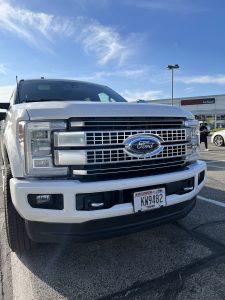The rise in popularity of larger and higher vehicles has raised concerns about the safety of pedestrians and bicyclists on the road. These types of vehicles pose a unique threat to people on foot or on bikes because of their size and height, which can make it more difficult for drivers to see them and more dangerous in the event of a collision. The Chicago personal injury lawyers of Zneimer & Zneimer have seen some devastating
One of the biggest dangers that larger and higher vehicles pose to pedestrians and bicyclists is the difficulty they can have in being seen by drivers. These vehicles are often much taller than smaller cars and trucks, which can block the view of drivers and make it harder for them to see people on foot or on bikes. Additionally, the high hoods and large bumpers of these vehicles can also make it more difficult for drivers to accurately judge the distance between their vehicle and pedestrians or bicyclists, making it more likely for an accident to occur.
Another issue with larger and higher vehicles is the impact they can have in the event of a collision. These vehicles are often much heavier than smaller cars and trucks, meaning that they can cause much more severe injuries in the event of a collision. Furthermore, the high ground clearance of these vehicles can also make it more likely for pedestrians and bicyclists to be hit in the head or torso, which are the areas most likely to result in serious injury or death.
To mitigate the risks posed by larger and higher vehicles to pedestrians and bicyclists, it is important for drivers to take extra precautions when driving in areas where these types of people are present. This can include slowing down, using extra caution at intersections and crosswalks, and being mindful of the height of the vehicle when driving in areas with low bridges or underpasses. Additionally, pedestrian and bike safety can be improved through better infrastructure design. For example, providing bike lanes and sidewalks that are separated from the road, or using traffic calming measures like roundabouts or chicanes, can help to reduce the speed of vehicles and reduce the likelihood of a collision.
Car size has been a topic with regards to its impact on car accidents. Larger cars can lead to more severe accidents due to their increased weight and size. This is because larger cars are often heavier than smaller vehicles, meaning that they have more mass and momentum during a collision. As a result, they can cause more damage to other vehicles and more serious injuries to the occupants of those vehicles. When two vehicles collide, the amount of damage that is sustained is determined by a combination of factors, including the speed of the vehicles and their mass. The more mass a vehicle has, the more momentum it will have during a collision, which can result in more severe damage to other vehicles and more serious injuries to their occupants. This is why larger cars can be particularly dangerous in collisions with smaller vehicles like cars, motorcycles, and bicycles. In addition to causing more severe accidents, larger cars can also be less maneuverable than smaller vehicles, which can make it harder for drivers to avoid a collision. This can be particularly dangerous in situations like city driving, where quick reactions are often necessary to avoid a collision. Furthermore, larger cars can also be more difficult to handle and control, which can result in accidents even when a collision is not involved.
It is important to maintain good insurance coverage. If you have been in an accident and need assistance, the Chicago car accident lawyers of Zneimer & Zneimer can help.
 Chicago Accident Lawyer Blog
Chicago Accident Lawyer Blog


